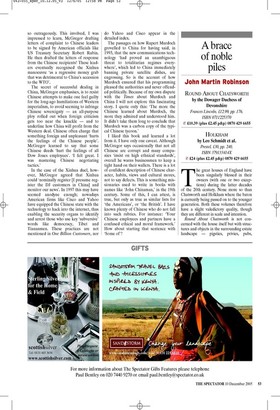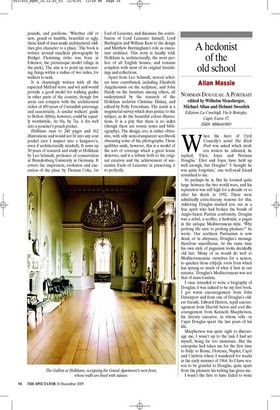A brace of noble piles
John Martin Robinson
ROUND ABOUT CHATSWORTH by the Dowager Duchess of Devonshire Frances Lincoln, £12.99, pp. 176, ISBN 0711225370 ✆ £10.39 (plus £2.45 p&p) 0870 429 6655 HOLKHAM by Leo Schmidt et al. Prestel, £30, pp. 240, ISBN 379133414X ✆ £24 (plus £2.45 p&p) 0870 429 6655 The great houses of England have been singularly blessed in their owners (with one or two exceptions) during the latter decades of the 20th century. None more so than Chatsworth and Holkham where the baton is currently being passed on to the younger generation. Both these volumes therefore have a slight valedictory quality, though they are different in scale and intention.
Round About Chatsworth is not concerned with the house itself but with structures and objects in the surrounding estate landscape — pigsties, privies, pubs, pounds, and pavilions. ‘Whether old or new, grand or humble, beautiful or ugly, these kind of man-made architectural oddities give character to a place.’ The book is written around excellent photographs by Bridget Flemming (who was born at Edensor, the picturesque model village in the park). The aim is to point up interesting things within a radius of two miles, for walkers to seek.
It is charmingly written with all the expected Mitford verve and wit and would provide a good model for walking guides in other parts of the country, though few areas can compete with the architectural riches of 450 years of Cavendish patronage and eccentricity. A similar walkers’ guide to Bolton Abbey, however, could be equally worthwhile. At 9in. by 7in. it fits well into a poacher’s pouch pocket.
Holkham runs to 240 pages and 162 illustrations and would not fit into any coat pocket (nor I suspect into a kangaroo’s, even if architecturally minded). It sums up 30 years of research and study at Holkham by Leo Schmidt, professor of conservation at Brandenburg University in Germany. It covers the inspiration, evolution and execution of the place by Thomas Coke, 1st Earl of Leicester, and discusses the contribution of Lord Leicester himself, Lord Burlington and William Kent to the design and Matthew Brettingham’s role as executant architect. This story is lucidly told. Holkham is, architecturally, the most perfect of all English houses, and remains complete with most of its original furnishings and collections.
Apart from Leo Schmidt, several scholars have contributed, including Elizabeth Angelicoussis on the sculpture, and John Hardy on the furniture among others, all underpinned by the research of the Holkham archivist Christine Hiskey, and edited by Polly Feversham. The result is a magisterial survey which does justice to the subject, as do the beautiful colour illustrations. It is a pity that there is no index (though there are source notes and bibliography). The design, too, is rather obtrusive, with silly semi-transparent scrollwork obscuring some of the photographs. Those quibbles aside, however, this is a model of the sort of coverage which a great house deserves, and is a tribute both to the original creation and the achievement of successive Earls of Leicester in preserving it so perfectly.


























































 Previous page
Previous page